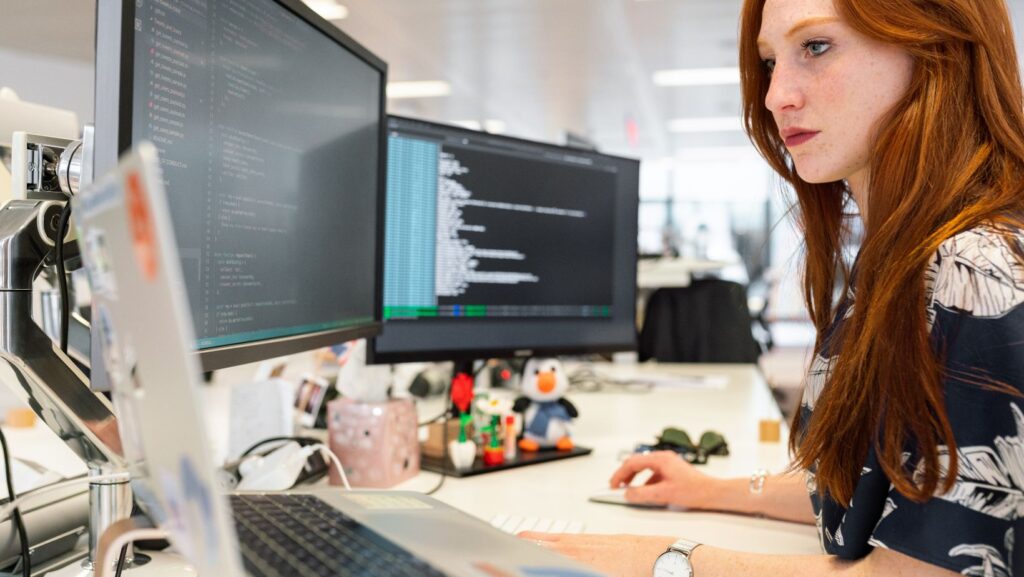These days, technology has been making waves in various industries. The conventional ways of doing things are now mutated to derive better and more profitable solutions. One good example that you’ll find on platforms like 7Slots is the fusion of physical and virtual features to form live casinos. Here, players enjoy real-time gaming rounds from their homes while enjoying a brick-and-mortar experience. The chance to push beyond the limits is something that advanced robotics provides to mankind.
Imagine being able to replicate the function and structure of the human brain in machines. Sounds fictional, yeah? However, recent technological advancements have proven this is possible and duplicatable. They challenge the traditional forms of information technology to create something extraordinary.
Understanding Neuromorphic Computing
This is a highly innovative aspect of computer science that deals with recreating the function and makeup of the human brain in computing systems. The purpose of this computing type is to combat the limitations of traditional computing systems and design a new method of solving complex technological issues.
In the usual computing systems, data is processed through the central processing unit (CPU), otherwise known as the brains of the computer. Also, it is stored in a separate memory unit. These functions should be pre-programmed in order to achieve the desired results; thereby, they become shackled by these algorithms. As a result, this structure possesses limitations regarding processing large and complex data sets.
Benefits of Neuromorphic Computing
Neuromorphic computing is designed after the structure and function of the human brain. Hence, it houses various artificial neurons and synapses that collaborate in a way similar to how the components of the brain communicate with one another. Therefore, the following is possible:
- It can learn and adapt in real time and even adjust its behavior based on internal data. This ability helps to provide an ideal solution to various problems, including pattern recognition and complex decision-making;
- Neuromorphic systems are super-efficient and designed to process information in real time without storing or transferring a whole lot of data. These characteristics make them best suited for applications in advanced industries like robotics, edge informatics, and autonomous systems;
- It can process complex and different sensory, visual, and auditory information. This makes it best suited for applications in sectors like speed recognition, natural language processing, and computer vision.
Despite all of these upsides, some challenges still need to be addressed. It entails a deeper understanding of the human brain’s workings, better hardware and software tools, and robust algorithms.
Applications of Neuromorphic Computing
This system is set to revolutionize different aspects. One of the major benefits of this tech is that it processes information and enhances live reactions. This is one area in which traditional AI models are limited. They struggle with the power consumption and latency linked with complex computations. However, this tech improves things by enabling faster and more efficient decision-making processes.

Let’s look at some of the various fields where it takes the forefront and continues to influence their designs.
Autonomous Systems
This tech allows machines to process information live with great adaptability and efficiency. It is paving the way for advancements in autonomous systems via manufacturing robots and artificial intelligence models that can do complex tasks with human-like composure and efficiency. It also enhances the processing speed and decision-making capabilities of autonomous systems. The purpose of this is to make them more reliable and responsive.
Autonomous drones equipped with this tech can perform complex tasks like package delivery, infrastructure inspections, and disaster response with high efficiency and reliability.
Advanced Robotics
The use of this informatics in robotics varies and is quite wide. It is integrated into this sector to improve the capabilities in logistics, manufacturing, and service industries. Hence, it continually drives innovation and economic growth by designing robots to perform tasks that were previously impossible with traditional computer engineering methods.
The manufacturing industry uses this advanced computational science to develop better robotic systems that can work simultaneously with humans on production lines. These bots can adapt to dynamic conditions, handle delicate tasks with precision, and perform quality control. They can also process live sensory data and operate safely and efficiently, increasing productivity and reducing operational costs in such a way.
Riding on the Coattail of Machine Intelligence
Neuromorphic computing is changing the intelligent robotics sector. It does this by providing a major improvement in efficiency and performance.

This computing type represents a novel and exciting field of computer science that single-handedly changed computer engineering. Just by replicating the structure and function of the human brain in computing systems, these machines can provide creative solutions to real and complex situations and problems.
In a nutshell, it transcends the limitations of conventional computational science, which leads to providing an edge that is powerful enough to create the next generation of robotics and autonomous systems.
